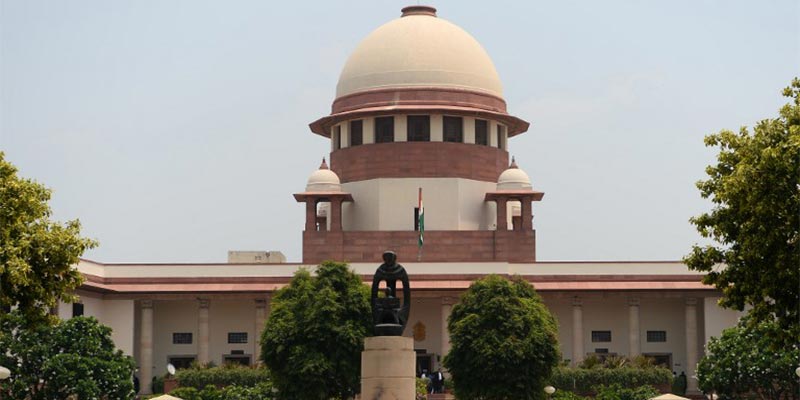- India
- Aug 03
- Kevin Savio Antony
Supreme Court judgment backs validity of Tamil Nadu’s Arunthathiyar quota law
• The Supreme Court, in a majority judgment, upheld the constitutional validity of a Tamil Nadu law that grants preferential treatment among Scheduled Castes (SCs) to the socially and educationally backward Arunthathiyars.
• The seven-judge Bench, led by Chief Justice of India D.Y. Chandrachud, ruled 6:1 in favor of the law, asserting that sub-categorisation within a class is necessary to achieve substantive equality.
• The judgment stated that sub-classification applies to SCs when the social positions of the various castes or groups within the SC category are not comparable.
Background:
• The Tamil Nadu State Legislature passed the Tamil Nadu Arunthathiyars Reservation Act, 2009, to provide preferential reservations for Arunthathiyars in state service appointments and educational institutions.
• The Act includes several castes under the term ‘Arunthathiyars’ — Arunthathiyar, Chakkiliyan, Madari, Madiga, Pagadi, Thoti, and Adi Andhra — from the list of 76 SCs notified by the President under Article 341 of the Constitution.
• Section 3 of the Act mandates that 16 per cent of the seats reserved for SCs in educational institutions be allotted to Arunthathiyars, contingent on their social and educational backwardness.
• Section 4 extends similar provisions for Arunthathiyars in government job recruitment.
• The challenges to the Tamil Nadu Act were considered alongside a similar case from Punjab, which granted preferential treatment to Balmikis and Mazhabi Sikhs among SCs.
• In August 2020, a five-judge Constitution Bench referred the matter to a seven-judge Constitution Bench to decide whether states could sub-classify SCs when the social positions of the groups within the SC category are not comparable.
Arguments for sub-classification:
• Enhanced Flexibility: Sub-classification allows both central and state governments to design policies that specifically address the needs of the most disadvantaged within SC/ST communities. This ensures that resources and opportunities reach those who need them the most.
• Alignment with Social Justice: Proponents argue that sub-classification helps achieve the constitutional goal of social justice by providing targeted benefits to those who are most in need, ensuring more equitable distribution of resources and opportunities.
Arguments against sub-classification:
• Homogeneity of SCs and STs: Critics argue that sub-classification could undermine the uniform status of SCs and STs as recognised in the Presidential list, potentially leading to fragmentation and dilution of the collective identity of these communities.
• Potential for Inequality: There are concerns that sub-classification could lead to further division and potentially exacerbate inequalities within the SC community, creating a hierarchy among sub-castes and possibly leading to competition and conflict among them.
Constitutional Provisions:
• Article 16(4): This provision permits reservations for backward classes who are inadequately represented in state services, supporting the idea of tailored affirmative action.
• Article 15(4): Empowers the state to create special arrangements for promoting the interests and welfare of socially and educationally backward classes of society, including SCs and STs.
• Article 342A: Supports the flexibility of states in maintaining their lists of socially and economically backward classes, allowing them to address specific local needs and conditions.
Challenges of sub-classification:
• Data Collection and Evidence: Accurate and comprehensive data on the socio-economic conditions of different sub-groups within SCs and STs is crucial. States must rely on empirical evidence to justify their sub-classification decisions. Ensuring data accuracy and avoiding biases can be challenging.
• Balancing Interests: Sub-classification aims to uplift the most disadvantaged sub-groups, but balancing competing interests can be complex.
• Uniformity vs Diversity: While sub-classification allows tailoring policies, it may lead to variations across states. Striking a balance between uniformity and addressing local needs is a challenge. Ensuring that sub-categories do not undermine the overall goals of reservation policies is crucial.
• Political Resistance: Sub-classification policies can face opposition from political groups that either support or oppose changes to reservation systems, leading to potential delays and conflicts.
• Social Tensions: Sub-classification might exacerbate existing social tensions within SC/ST communities, leading to intra-community conflicts and divisions.
• Administrative Burden: The process of creating, managing, and updating sub-categories adds a significant administrative burden on government agencies, necessitating additional resources and manpower.
(The author is a trainer for Civil Services aspirants.)

